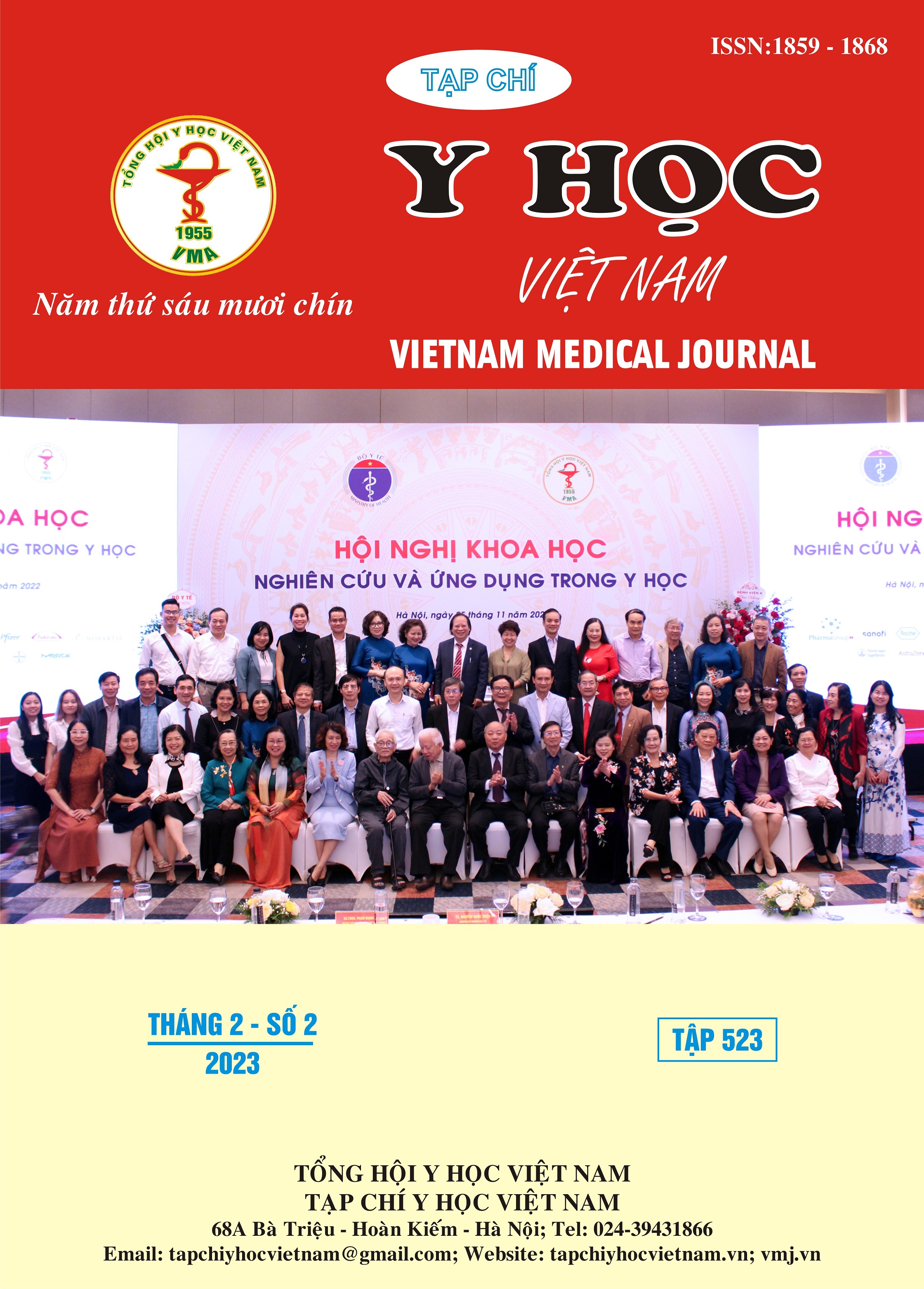DESCRIPTIONS AND CORRELATIONS AMONG HEMATOLOGICAL, HEMOSTATIC AND OTHER FEATURES IN LUNG CANCER PATIENTS OF NATIONAL INSTITUTE OF HEMATOLOGY AND BLOOD TRANSFUSION IN 2020 – 2022
Main Article Content
Abstract
Despite the fact that primary lung cancer is a malignant disease that doesn’t come from hematopoietic system, there are plenty of researches provide information on the diverse alterations in hematological and hemostatic disorder during the growth of malignant tumor as well as the process of treating cancer patients. Objectives: (1) Describe hematological and hemostatic features in lung cancer patients admitted National Institute of Hematology and Blood Transfusion in 2020 – 2022. (2) Evaluate the correlation among hematological, hemostatic and other features of research subjects. Methods and materials: 34 patients admitting the first time at the research location and already been diagnosed with lung cancer before admission. Results: Age group 50-64 years old accounts for the highest figure with 76.5%. The ratio of men to women is about 8:1. White blood cells elevate in over 40% patients, average of 16.13 ± 23.29 G/L. Almost 50% patients increasing platelets with average of 511.35 ± 511.67 G/L. Intermediate and high risks VTE are seen in 60% lung cancer patients based on Khorana score who need prophylaxis. D-dimer rises in 82% subjects while Fibrinogen increases in 80% subjects, with the average numbers are 2061.97 ± 2180.45ng/ml and 5.22 ± 1.33 g/l respectively. There is no statistical difference seen in comparison of hematological and hemostatic values between group patients treated and the non-treated group. The concentration of Fibrinogen and the number of platelets among research subjects follow a positive correlation, with r=0,6. Conclusion: Subjects of research suffer from various hematological, hemostatic elevation and risks of VTE based on Khorana score with positive correlations among some features. There is no correlation between the figure and treatment condition. Patients experiencing elevated white blood cells and platelets with unknown reasons should screen for hemostatic abnormalities and lung cancer.
Article Details
Keywords
Lung cancer, primary lung cancer, hematological, hemostatic features
References
2. Hollowell JG, van Assendelft OW, Gunter EW, et al. Hematological and iron-related analytes--reference data for persons aged 1 year and over: United States, 1988-94. Vital Health Stat 11. 2005;(247):1-156.
3. Klion AD. Eosinophilia: a pragmatic approach to diagnosis and treatment. Hematol Am Soc Hematol Educ Program. 2015;2015:92-97. doi:10.1182/asheducation-2015.1.92
4. Weltgesundheits Organization. WHO Classification of Tumours of Haematopoietic and Lymphoid Tissues. Revised 4th edition. (Swerdlow SH, Campo E, Harris NL, et al., eds.). International Agency for Research on Cancer; 2017.
5. Kiss M, Caro AA, Raes G, Laoui D. Systemic Reprogramming of Monocytes in Cancer. Front Oncol. 2020;10:1399. doi:10.3389/ fonc.2020.01399
6. Tavakkoli M, Wilkins CR, Mones JV, Mauro MJ. A Novel Paradigm Between Leukocytosis, G-CSF Secretion, Neutrophil-to-Lymphocyte Ratio, Myeloid-Derived Suppressor Cells, and Prognosis in Non-small Cell Lung Cancer. Front Oncol. 2019;9:295. doi:10.3389/fonc.2019.00295
7. Zhu JF, Cai L, Zhang XW, et al. High plasma fibrinogen concentration and platelet count unfavorably impact survival in non-small cell lung cancer patients with brain metastases. Chin J Cancer. 2014;33(2):96-104. doi: 10.5732/cjc.012.10307
8. İnal T, Anar C, Polat G, Ünsal İ, Halilçolar H. The prognostic value of D-dimer in lung cancer: Prognostic value of D-dimer in lung cancer. Clin Respir J. 2015;9(3):305-313. doi:10.1111/crj.12144
9. Zheng S, Shen J, Jiao Y, et al. Platelets and fibrinogen facilitate each other in protecting tumor cells from natural killer cytotoxicity. Cancer Sci. 2009;100(5):859-865. doi:10.1111/j.1349-7006.2009.01115.x
10. Farge D, Frere C, Connors JM, et al. 2019 international clinical practice guidelines for the treatment and prophylaxis of venous thromboembolism in patients with cancer. The Lancet Oncology. 2019;20(10):e566-e581. doi:10.1016/S1470-2045(19)30336-5


